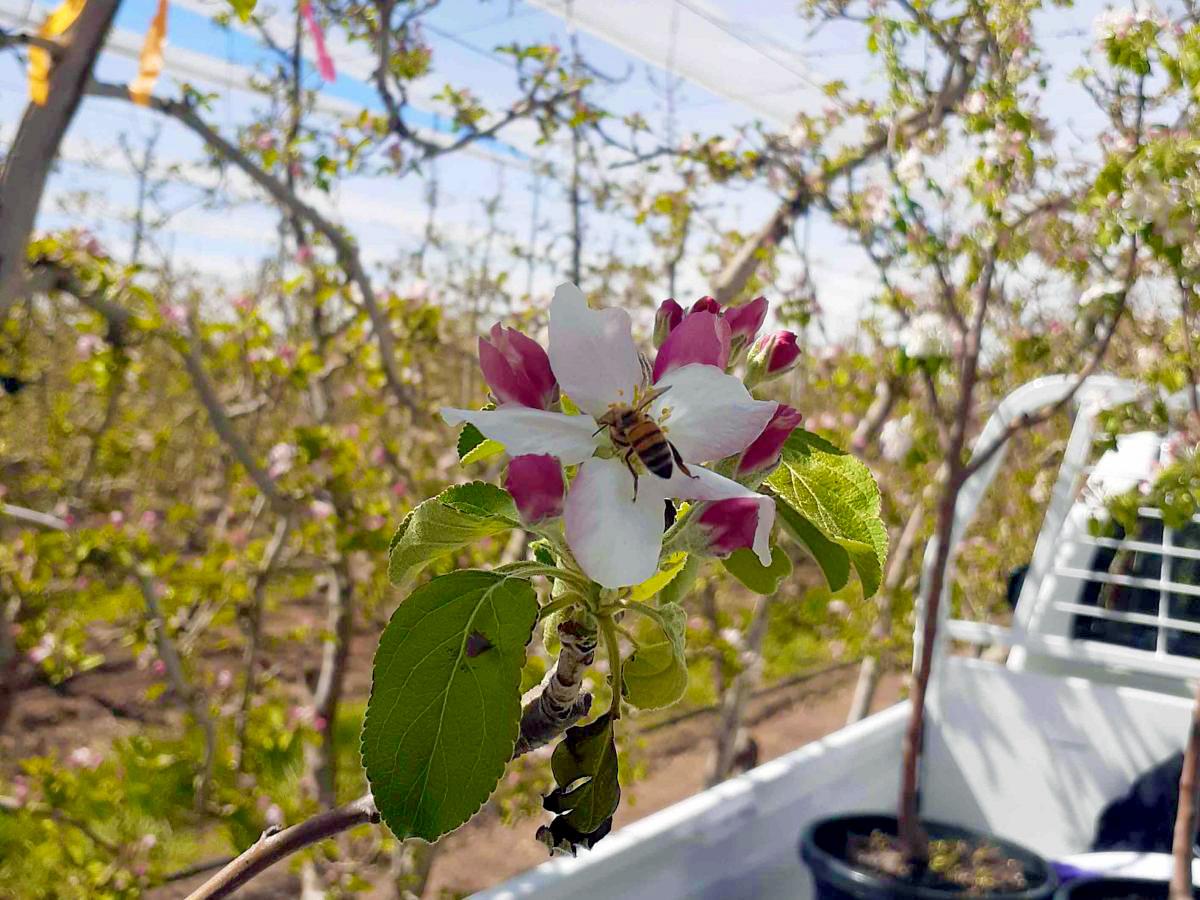Pollen home delivery sweet for honey bees

A honey bee visits a potted polliniser plant on the back of a slow moving vehicle.
Scientists are exploring the use of mobile polliniser units to improve cross-pollination in netted apple orchards in a new trial being delivered through Hort Innovation in partnership with the University of Adelaide.
Over the past 14 months, scientists have been working with apple growers in the Adelaide Hills as part of the project, which aims to solve the challenges involved in using honey bees to cross-pollinate in undercover settings.
“Once the concept has been proven we will fine-tune it further by investigating the number of polliniser trees required for optimal pollination, and the number of polliniser units needed in the orchard."Dr Katja Hogendoorn, School of Agriculture, Food and Wine, The University of Adelaide
The trial has involved placing potted polliniser trees on the tray top of a slow-moving vehicle. Results are showing honey bees have been using the trees as a ‘bridge’ to traverse between rows in the orchard and in doing so inadvertently picking up the right pollen required for cross-pollination.
Hort Innovation research and development manager Ashley Zamek said the use of protected cropping in Australia is on the rise because it offers growers the opportunity to exercise more control over the growing environment, so this research has never been more important.
“This research, which is taking place in apple orchards under netting, has shown that honey bees are not moving as far and effectively as they do in the field,” she said.
“Apple production requires deposits of pollen from a different variety of flowers. Reduced honey bee activity means less pollen delivery, which in turn, lowers fruit set and quality.”
Ms Zamek said “this research is exciting because it may pave the way for the effective use of motorised or robotic pollinator units in the future, alongside managed honey bees.”
University of Adelaide project lead Dr Katja Hogendoorn from the School of Agriculture, Food and Wine, said the results from the first year of data collected from the trial are promising, however the research is still in the early stages and further testing is required to assess the effects on fruit set.
“Once the concept has been proven we will fine-tune it further by investigating the number of polliniser trees required for optimal pollination, and the number of polliniser units needed in the orchard,” Dr Hogendoorn said.
This project, Novel technologies and practices for the optimisation of pollination within protected cropping environments, is being delivered through Hort Innovation with funding from the Australian Government Department of Agriculture and the Environment as part of its Rural R&D for Profit program.
The NSW Department of Primary Industries, the University of Tasmania, Plant and Food Research and the University of New England are also involved in the three-year research effort, which is due for completion in March 2023.
